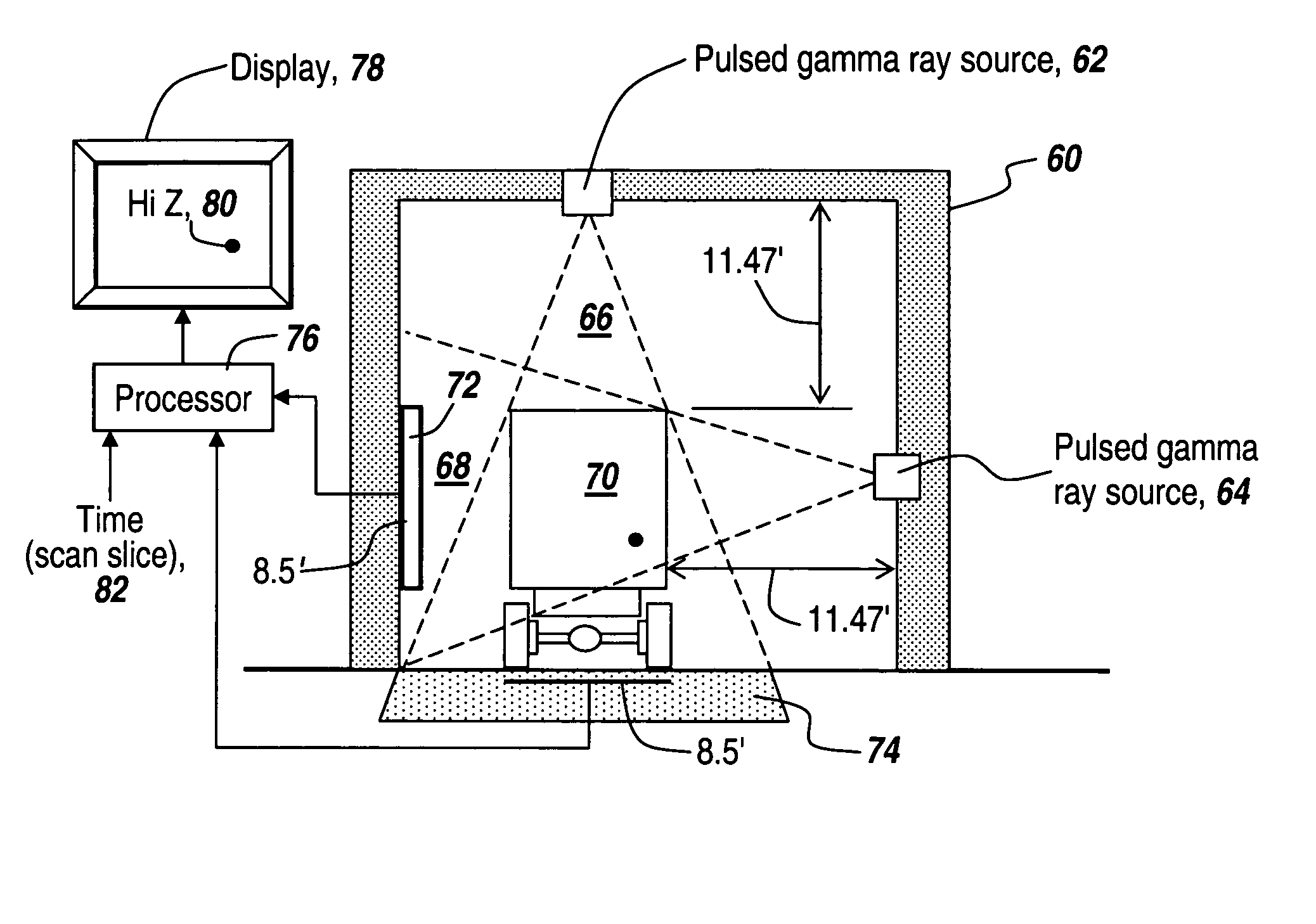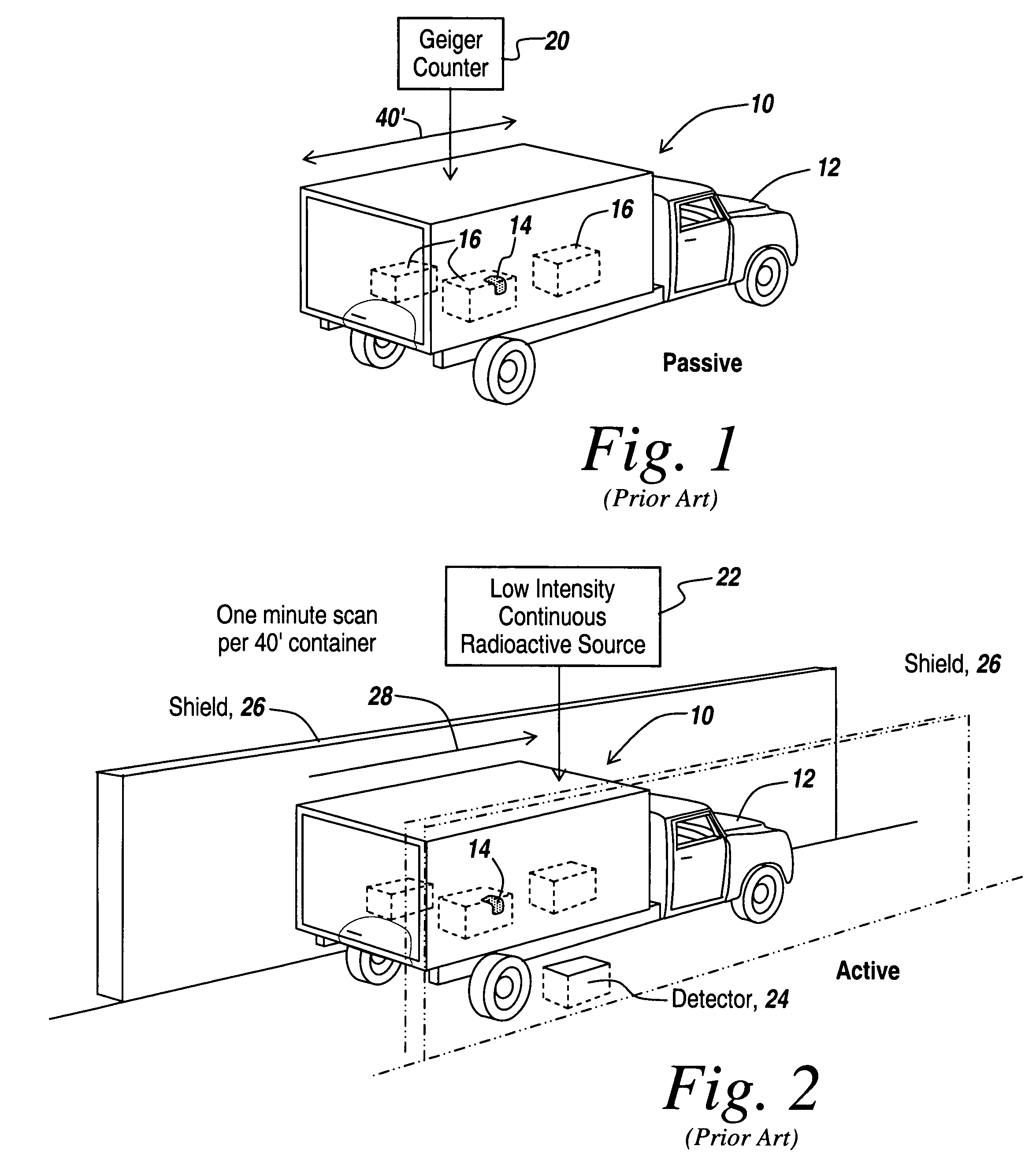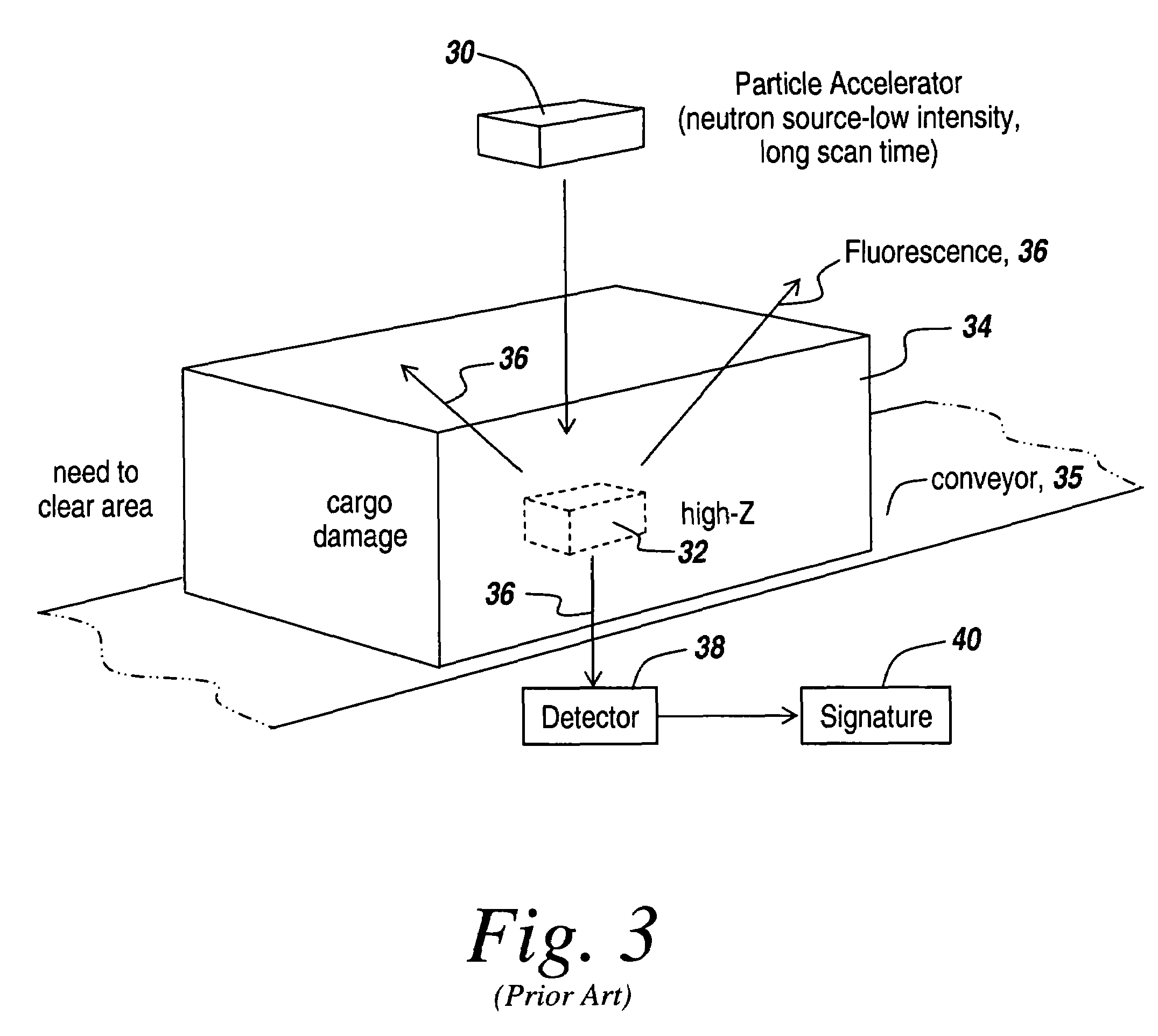Method and apparatus for the safe and rapid detection of nuclear devices within containers
a container and nuclear technology, applied in the direction of material analysis, material analysis using wave/particle radiation, instruments, etc., can solve the problems of low-intensity continuous gamma rays that are not powerful enough, system cannot see through large amounts of cargo, passive techniques such as geiger counters cannot be utilized to detect the presence of nuclear materials, etc., to achieve safe, reliable and rapid detection, and low cost of solid-state detectors
- Summary
- Abstract
- Description
- Claims
- Application Information
AI Technical Summary
Benefits of technology
Problems solved by technology
Method used
Image
Examples
Embodiment Construction
[0078]Referring now to FIG. 1, a container 10, which may be 40 feet in length, is located on a truck 12 that transports the container through a port facility.
[0079]In order to find out whether or not there is a threat 14 within cargo 16 in container 10, a Geiger counter 20 is utilized to passively detect radiation from threat 14 as it exits the container.
[0080]As mentioned hereinbefore, the problem with passive systems is that either lead that packages a threat or water itself, for instance in frozen food, can completely mask the radiation from threat 14.
[0081]Referring to FIG. 2, in another prior art system, in an active system, threat 14 is detected through the use of a low-intensity continuous radioactive source 22 that detects the attenuation of radiation from the source through the container to a detector 24. It is noted that in the case of utilizing radioactive sources there is a significant health hazard in addition to the inability to detect the low-intensity continuous radi...
PUM
| Property | Measurement | Unit |
|---|---|---|
| speed | aaaaa | aaaaa |
| length | aaaaa | aaaaa |
| lengths | aaaaa | aaaaa |
Abstract
Description
Claims
Application Information
 Login to View More
Login to View More - R&D
- Intellectual Property
- Life Sciences
- Materials
- Tech Scout
- Unparalleled Data Quality
- Higher Quality Content
- 60% Fewer Hallucinations
Browse by: Latest US Patents, China's latest patents, Technical Efficacy Thesaurus, Application Domain, Technology Topic, Popular Technical Reports.
© 2025 PatSnap. All rights reserved.Legal|Privacy policy|Modern Slavery Act Transparency Statement|Sitemap|About US| Contact US: help@patsnap.com



